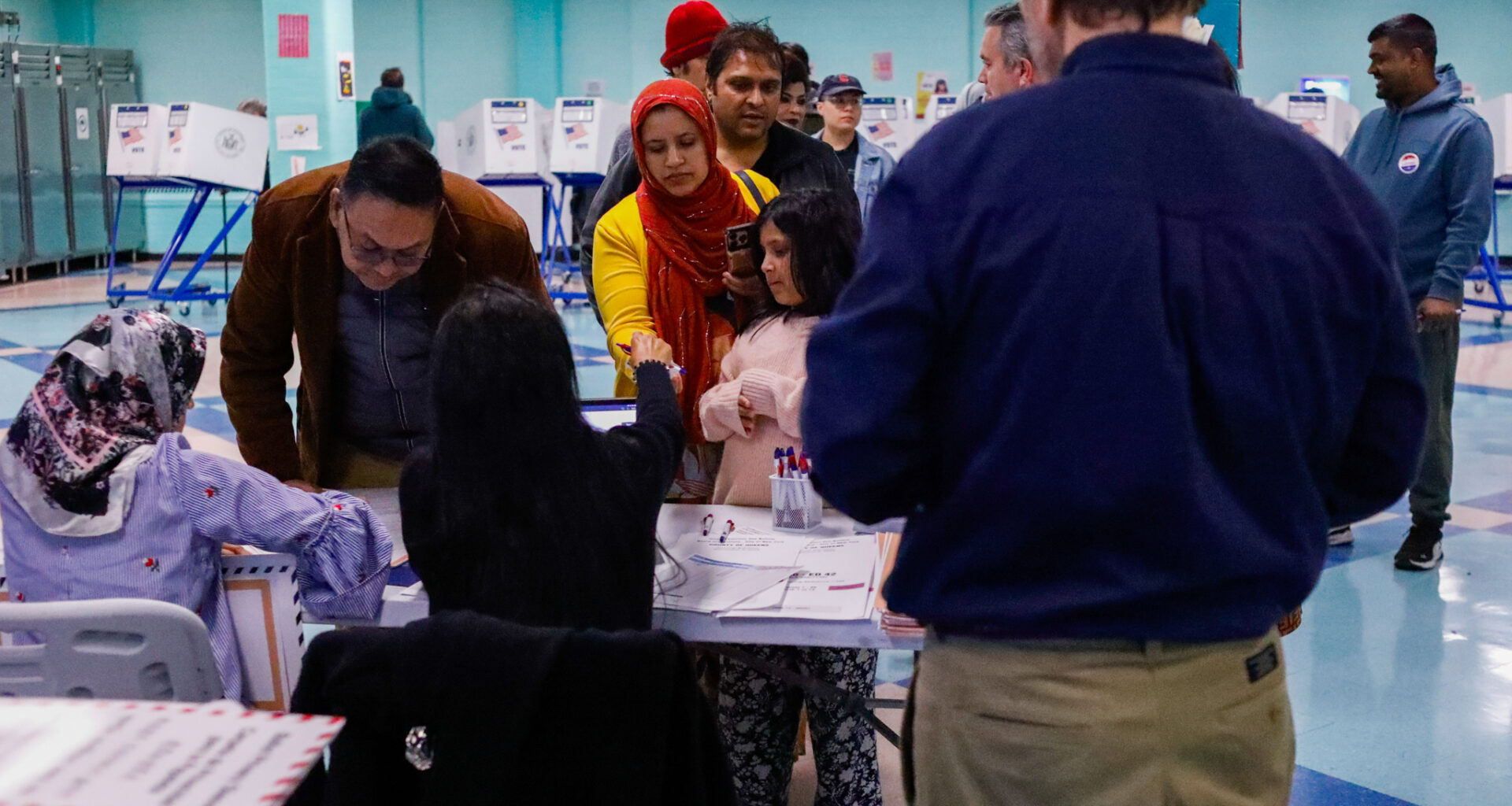The number of voters casting ballots in the tense three-way race for mayor between Zohran Mamdani, Andrew Cuomo and Curtis Sliwa is breaking records, with more than 1.7 million check-ins by the afternoon according to the city Board of Elections.
By comparison, 1.1 million ballots were cast in the entire 2021 election won by Mayor Eric Adams, and the last election to see more than 1.7 million was in 1993, when Rudy Giuliani beat incumbent David Dinkins and about 1.8 million voters cast ballots.
Polls are open until 9 p.m. The in-person votes and absentee ballots tallied so far account for 34% of the city’s roughly 5.3 million registered voters.

Most major polls show Mamdani to be tonight’s favorite. But no matter who wins, this election has created a highly engaged electorate — one that the city has not seen in decades. And it’s changed the electorate from one that was once dominated by older, staunchly center Democrats to younger, left-leaning voters, many attracted by Mamdani’s grassroots campaign organization.
Backed by tens of millions of dollars in attack ads, including some painting Mamdani as a dangerous radical, rival Andrew Cuomo has sought to rally a countermovement of voters, as has Republican nominee Curtis Sliwa.
The surge in turnout is largely propped by the 735,317 votes cast during early voting, which ran for nine days ending on Sunday. Though heavy rains last Thursday seemed to have impeded voters’ momentum, overall it did not stop certain groups of voters – such as Millennials or those who live in wealthier election districts – from turning out in large shares, according to an analysis by THE CITY.
The surge in votes is even more notable because the electorate has shrunk since New Yorkers last voted for a mayor: currently about 5.3 million registered voters reside in the city, down from 5.6 million four years ago.

Still, some 189,000 city residents registered to vote between February and November — with many of them joining the left-leaning Working Families Party, which is running Mamdani on its ballot line alongside his Democratic Party spot. Working Families Party registrations grew by at least 6% since February and by 28% since the last election. By contrast, the number of registered Democrats grew by 5%, but the party rolls have shrunk 7% since the last election.
Related

